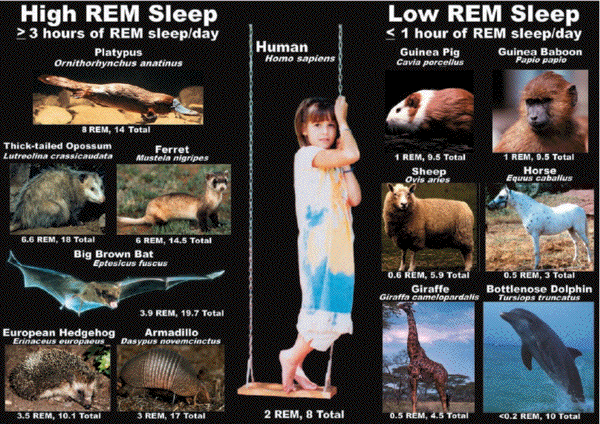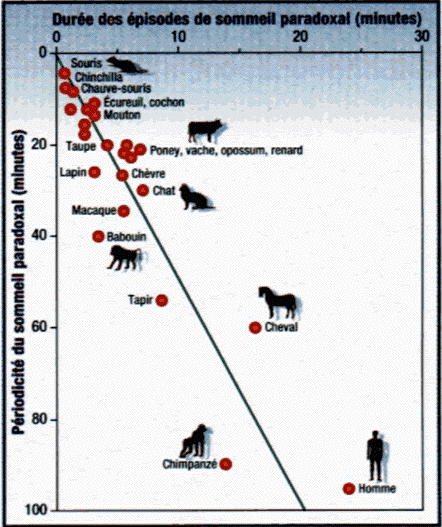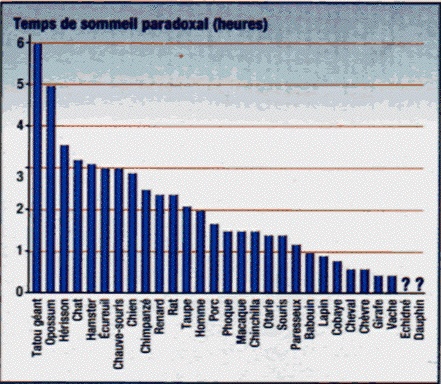The idea that REM sleep with its elaborate
associated dream mentation has a role in memory
consolidation is a very attractive one. It is a
pity that the evidence supporting this beautiful
idea is so weak. Vertes and Eastman marshal
impressive evidence inconsistent with a major
role of REM sleep in learning. To this I add the
mammalian phylogenetic data.
Much of the evidence finit that has been
advanced as supporting a positive relationship
between REM sleep and learning derives from
reported increases inREM sleep after learning
and blockade of learning after reduction in REM
sleep with deprivation procedures. As Vertes and
Eastman point out, most if not all of this
evidence does not withstand carefull scrutiny.
Nevertheless if we pursue the logic of this
approach, one would predict that animals with
greater learning capacity would have greater
amounts of REM sleep.
Indeed, learning and memory theorists often
imply that humans have large amounts of REM
sleep. In fact, humans follow the general trends
within the animal kingdom. Being large animals
they share the inverse relationship between size
and total sleep amount.
Humans sleep less than most smaller mammals.
If REM sleep is calculated as a percentage of
total sleep time, humans appear to have a lot of
REM sleep, though not a uniquely large amount.
However, the animals with the largest amounts of
REM sleep are not the primates. The animal with
the most REM sleep is the duckbilled platypus,
which has, depending on how the calculation is
done, approximately 7-8 hours of REM sleep a day
(Siegel et al. 1997; 1999). REM sleep in the
platypus has some unusual features. Perhaps of
most significance is the lack of the low voltage
EEG that characterizes REM sleep in other adult
mammals. If we put aside the platypus data, the
next contenders for the REM sleep championship
are the black-footed ferret and the armadillo
(Marks & Shaffery 1996; Prudom & Klemm
1973; Van Twyver & Allison 1974). What
intellectual attribute do these three animals
have in cognition? ls it intelligence or
stupidity ? Without disparaging the beauty and
role of these animals in the ecosystem, they are
largely instinct driven. Clearly they can learn
as can all mammals, but they do not appear to be
unique in their mental skills. In general, the
marsupials and monotrenses have more REM sleep
than the placentals.
How albout the other end of the spectrum? The
mammals with the least REM sleep are thee
cetaceans (whales and dolphins). Early reports
in captive animals did not detect any clear
episodes of REM sleep (Mukhametov et al. 1977;
Mukhametov 1987; Shurley et al 1969; Oleksenko
et al. 1992; Flanigan 1974). Clearly if dolphins
have any REM sleep at all, they can go without
it for days or weeks. A more recen study in a
captive gray whale demonstrated occasional
twitches during sleep (Lyamin et al. 2000). The
most generous estimates of the REM sleep total
in these animals would be less than 15 minutes a
day. How does the learning ability of dolphins
and whales, animals with the largest brains ever
to exist on earth, compare with that of the
platypus, ferret, and armadillo? It would he
difficult to defend the notion that the latter
are smarter than cetaceans. Across mammals, REM
sleep time is negatively correlated with brain
weight (Zeplin 1994).
Work by Jouvet-Mounier (Jouvet-Mounier et al.
197O) and a survey of the literature by Zepelin
(1994) led to the conclusion that REM sleep time
was correlated with immaturity at birth. Our
recent findings in the platypus at the high end
of the REM sleep scale and cetaceans at the low
strongly support this conclusion.
The immaturity of the platypus, hatching from
an egg, and remaining attached to its mother for
an extended period after birth is consistent
with its high level of REM sleep. The maturity
at birth of the cetaceans wich can swim free of
the mother and defend themselves immediately
after birth is consistent with their low level
of REM sleep. Neither the platypus nor the
cetacean data is consistent with a relation to
intellectual function or memory.
One way out of this dilemma for the
learning-REM supporters is to argue that amount
of REM sleep is not an informative variable;
that REM sleep in the platypus may be less
intense or effcient than that in the cetacean.
However, this post hoc resasonning is not
persuasive. There is no evidence that the very
short REM sleep periods in the cetaceans are
more intense or that those in the platypus are
less intense. In fact the best evidence in terms
of phasic event intensity argues just the
reverse. The platypus has more than 6 000 phasic
events during sleep/24 hours while the Gray
whale has fewer than 10. As to the contention
that time in REM sleep is not the important
variable; this is the very basis of the claim of
a relation between REM sleep and learning. The
learning theorists cannot convincingly argue
this point both ways.





